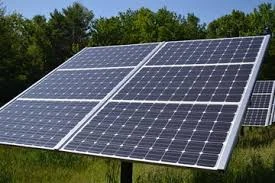Exploring the Performance Enhancements of Thin Film Solar Cell Technologies
Efficiency of Thin Film Solar Cells
Thin film solar cells have emerged as a promising technology for harnessing solar energy, owing to their unique advantages such as versatility, light weight, and lower manufacturing costs compared to traditional silicon-based solar cells. One of the critical metrics used to evaluate the performance of solar cells is their efficiency, which indicates how well they convert sunlight into usable electrical energy.
The efficiency of thin film solar cells typically ranges from 10% to 12%, which is slightly lower compared to conventional crystalline silicon cells that can achieve efficiencies above 20%. However, it is essential to note that the efficiencies of thin film technologies are improving steadily due to ongoing research and advancements in materials science. Recent developments have seen efficiencies in certain thin film technologies, such as copper indium gallium selenide (CIGS) and cadmium telluride (CdTe), reach levels of around 22.7% in laboratory settings.
One of the significant advantages of thin film solar cells lies in their manufacturing process. Unlike traditional solar cells, which require high energy and complex processes, thin film cells can be produced using simpler techniques like roll-to-roll processing. This method not only reduces production costs but also allows for flexible applications, making it easier to incorporate solar technology into various surfaces, including building-integrated photovoltaics (BIPV). Such flexibility can lead to increased adoption in urban environments where space for traditional solar panels may be limited.
efficiency of thin film solar cell

Additionally, thin film solar cells perform better in low-light conditions and high temperatures compared to their silicon counterparts, which can enhance their overall effectiveness in diverse climates. Their lightweight nature also means they can be installed on roofs where traditional panels might be too heavy, expanding the potential for solar energy usage across different structures.
However, one of the challenges facing thin film solar technology is the long-term stability and efficiency degradation over time. Researchers are continuously working on improving the durability of materials used in thin film solar cells, ensuring that they maintain efficiency levels throughout their expected lifespan of 25 years or more.
In conclusion, while thin film solar cells currently offer lower efficiency compared to traditional silicon solar cells, their advantages of cost, flexibility, and performance in various conditions position them as a viable alternative in the renewable energy sector. As technology advances, it is likely that we will continue to see improvements in the efficiency of thin film solar cells, paving the way for broader adoption and contributing to a more sustainable energy future.
-
Understanding the Advantages of Solar String Inverters for Your Energy SystemNewsApr.29,2025
-
Choosing the Right PV Inverter: A Comprehensive GuideNewsApr.29,2025
-
The Future of Solar Power: Exploring Bifacial Solar PanelsNewsApr.29,2025
-
The Complete Guide to Solar Panels: Efficiency, Cost, And InstallationNewsApr.29,2025
-
The Best Options for Efficiency and Cost-EffectivenessNewsApr.29,2025
-
Harnessing the Power of Off-Grid Solar Inverters for Energy IndependenceNewsApr.29,2025







